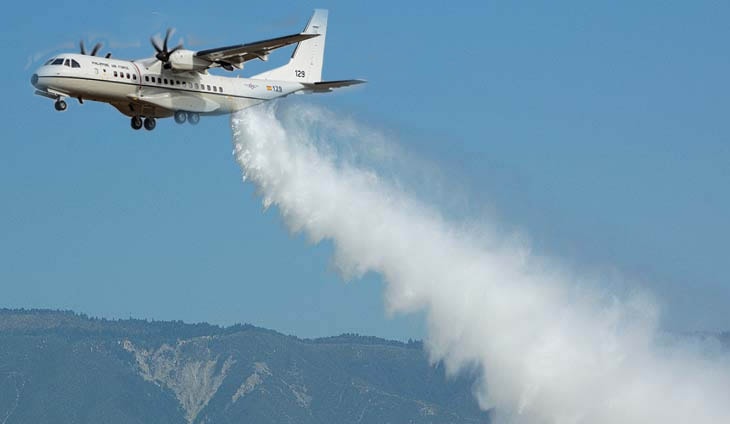
Cloud seeding. Humans interfering with Mother Nature to bring us more of the good stuff. It sounds too good to be true, but studies point to a snowfall increase of 3-10% during an entire season, and a Summit Daily news article lists 10% as an average increase, reports meteorologist and powder reporter Joel Gratz of opensnow.com.
- Related: VIDEO: Does Cloud Seeding Work?
Cloud seeding has existed since the 1940s when Bernard Vonnegut discovered that silver iodide could produce ice crystals when introduced into cloud chambers. In those days, cloud seeding was heralded as a way to produce rain where there was none, boosting crop yields and filling reservoirs to the brim. But in the mountains, where the economy relies on snowfall, these same methods can be used to gain an edge over rival resorts.

Cloud seeding is most commonly done out of airplanes. Planes fly into selected cloud formations and release packets of microscopic silver iodide particles using flares. When the particles meet cool moisture in the clouds, they trigger the formation of ice crystals and raindrops. The amount of silver iodide used is small enough to ensure it doesn’t pose a pollution risk. And it’s important to plan things well. Since clouds don’t produce rain until 20 or 30 minutes after seeding, one must ensure they deliver at the right place.
Most research has estimated that, on average, you can get a precipitation increase of around 10 percent; with some storms, you can get 25 percent, and in others, you get zero. This doesn’t sound like much, an extra inch during a ten-inch storm, but over the course of a season, that can add up to several extra feet. And at the relatively cheap cost of $250,000 per winter, it seems a no-brainer.
But not every cloud can be seeded, and the process is as much art as science. The ideal targets are warm clouds with plenty of liquid water floating around at freezing temperatures without particles to latch onto. On a cold day on the ski slopes, when a cloud hovers on the mountain, you can see evidence of this in the ice that forms on objects.
“If you go up to the top of A-Basin after a storm, you should see white ice that has grown on the lift towers and in the trees,” Frank McDonough, an atmospheric scientist at the Desert Research Institute in Nevada, explained. “What’s happening there is the water drops are floating around in the cloud and as soon as they hit a structure, that structure serves as a spot for a freezing event. With cloud seeding, what you’re doing is throwing some dust up in the cloud and creating the freezing in the cloud.”

In other words, if you see ice forming on towers while skiing this season, there could’ve been a missed opportunity to turn that into some extra powder.
Vail Mountain has contracted with Western Weather Consultants for over 40 years and hasn’t missed any chances for extra snow.
“Some storms Vail would get 18 inches and everybody else would get 12,” McDonough said.
Breckenridge Ski Resort, Keystone Resort, and Winter Park Resort all sponsor the Summit-area program. But snow that’s good for skiing is also good for drinking later on, and Front Range water managers have noticed.
All sounds good to me, anything we can do to increase our chances of powder days. What do you reckon? Extra 10% snowfall, or a waste of money?
AAAAAAAAAAA
I love you steven ager